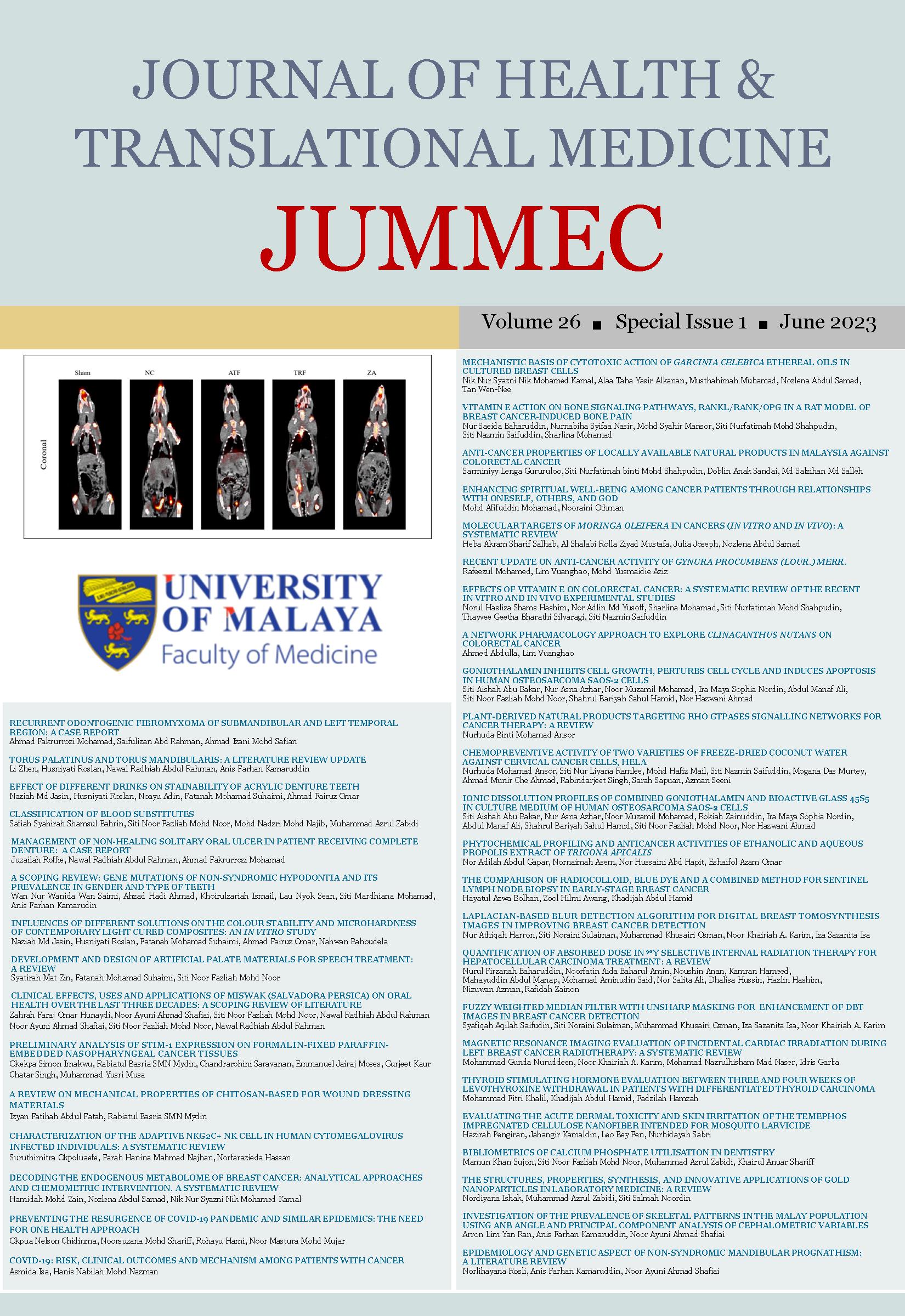QUANTIFICATION OF ABSORBED DOSE IN 90Y SELECTIVE INTERNAL RADIATION THERAPY FOR HEPATOCELLULAR CARCINOMA TREATMENT: A REVIEW
Received 2023-01-10; Accepted 2023-02-22; Published 2023-06-06
DOI:
https://doi.org/10.22452/jummec.sp2023no1.16Abstract
Selective internal radiation therapy (SIRT) has emerged as a viable strategy for the treatment of incurable
hepatic cancers. Although SIRT is a well-known therapy, continuous improvement in personalised dosimetry is
required to improve the treatment planning and delivery of therapy. The ability to precisely foresee, plan, and
administer the ideal dose to the tumour and non-tumoral tissues, including a final validation of the dose
distribution, is the primary principle of radiation. The main way for safely personalised therapy for a maximum
response while respecting normal tissue tolerances is to know the true absorbed dose to tissue compartments.
Recent clinical studies highlighted the significance of personalised dosimetry to make it safer and more
effective. Quantification of the absorbed dose distribution is of utmost importance in SIRT 90Y to optimise the
hepatocellular carcinoma (HCC) treatment. The aim of this article was to review various dosimetric approaches
in quantifying the absorbed dose of tumours and healthy liver tissue in 90Y SIRT. This article also compares the
capabilities of organ-level dosimetry, voxel-level dosimetry and Monte Carlo simulation in assessing the
absorbed dose in organs especially liver. The quantification of absorbed dose influences 90Y SIRT tumour
dosimetry, while healthy liver absorbed dose values were comparable for all investigated imaging data.
Personalised dosimetry for the tumour and healthy liver parenchyma after 90Y SIRT is recommended for
patient-tailored therapy with enhanced therapeutic outcomes and for the safe administration of additional
treatment cycles.
Downloads
Downloads
Published
Issue
Section
License
All authors agree that the article, if editorially accepted for publication, shall be licensed under the Creative Commons Attribution License 4.0 to allow others to freely access, copy and use research provided the author is correctly attributed, unless otherwise stated. All articles are available online without charge or other barriers to access. However, anyone wishing to reproduce large quantities of an article (250+) should inform the publisher. Any opinion expressed in the articles are those of the authors and do not reflect that of the University of Malaya, 50603 Kuala Lumpur, Malaysia.


